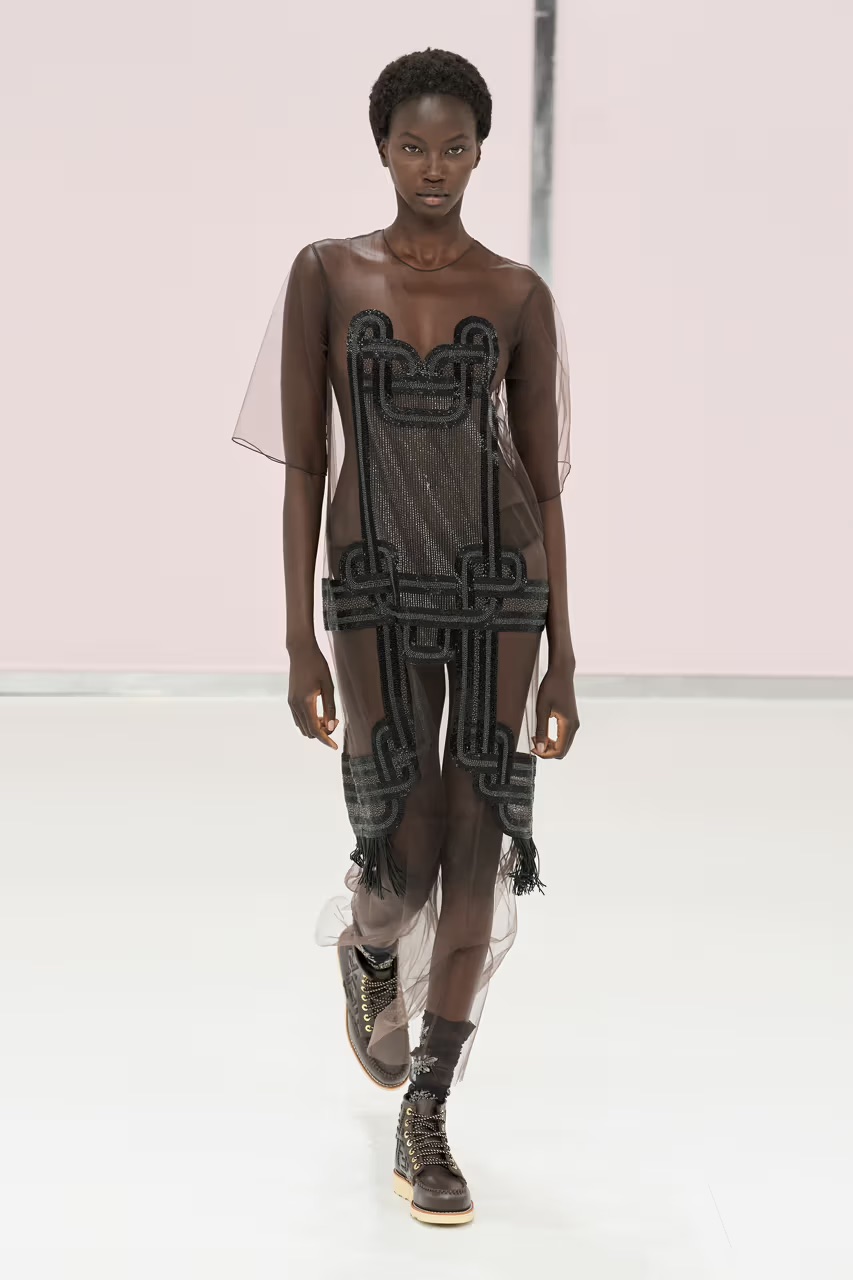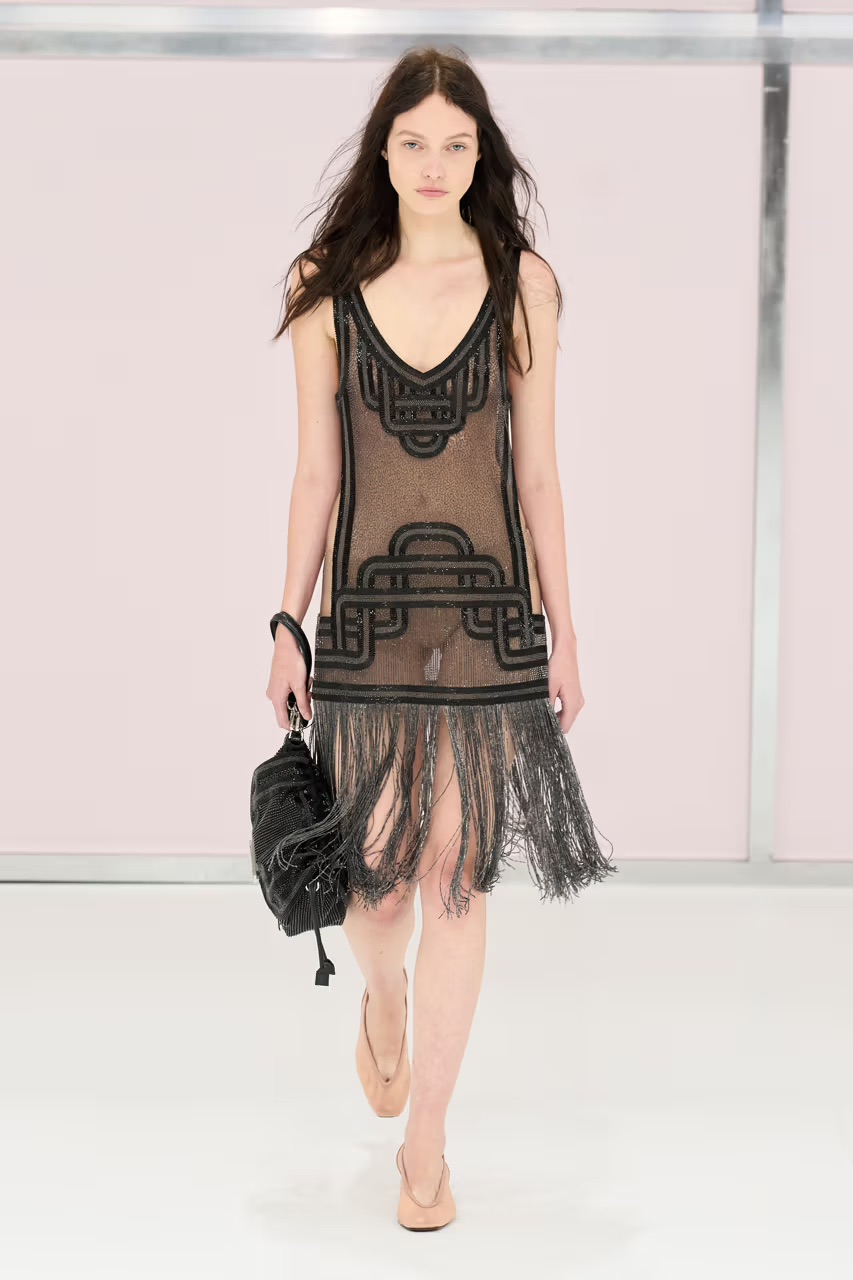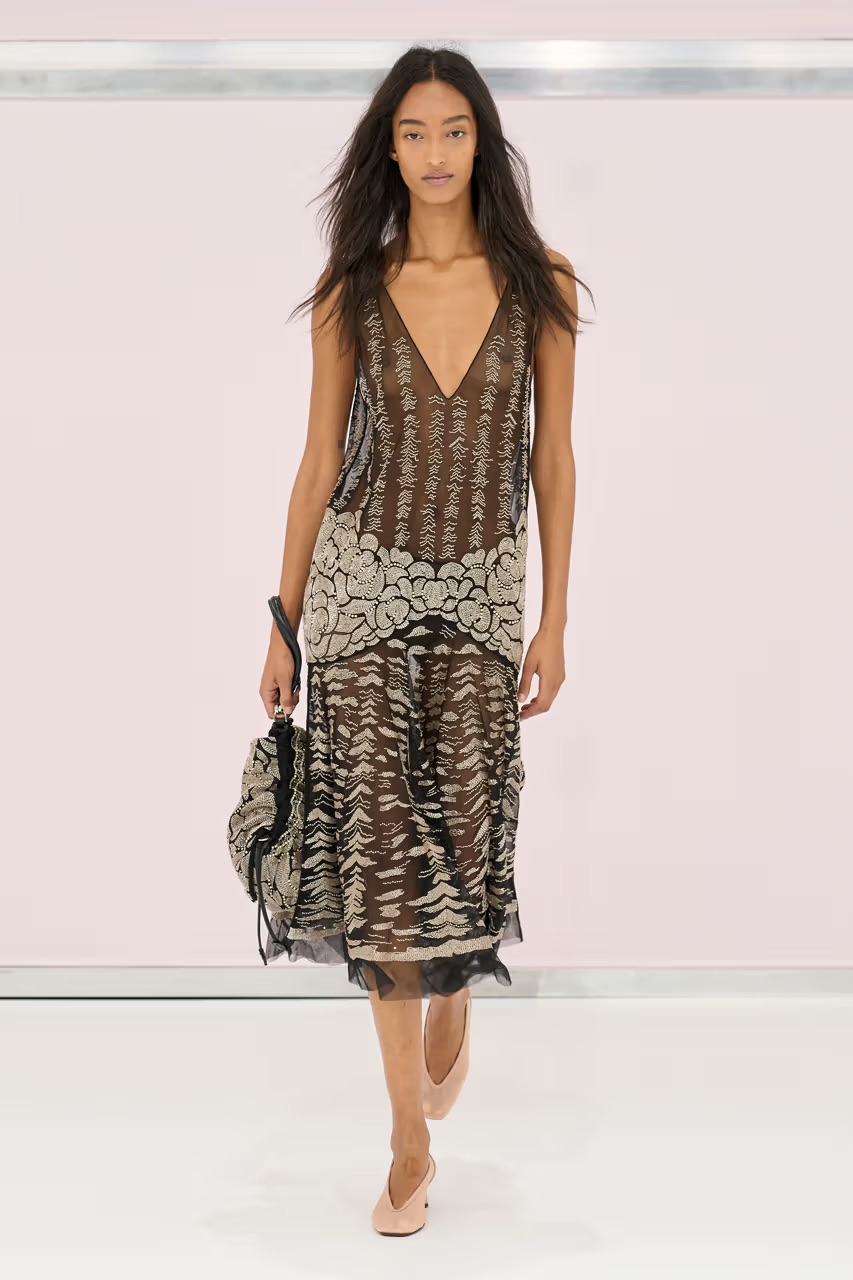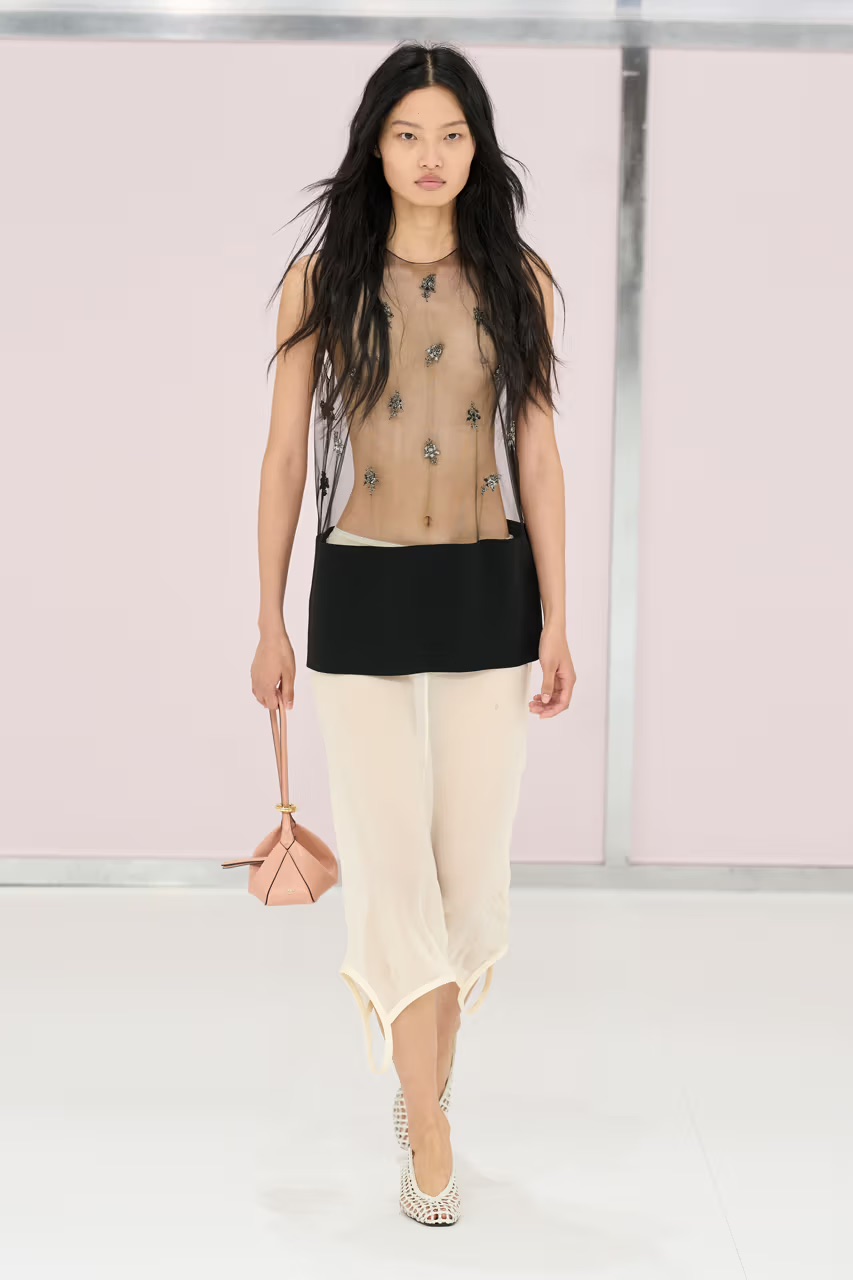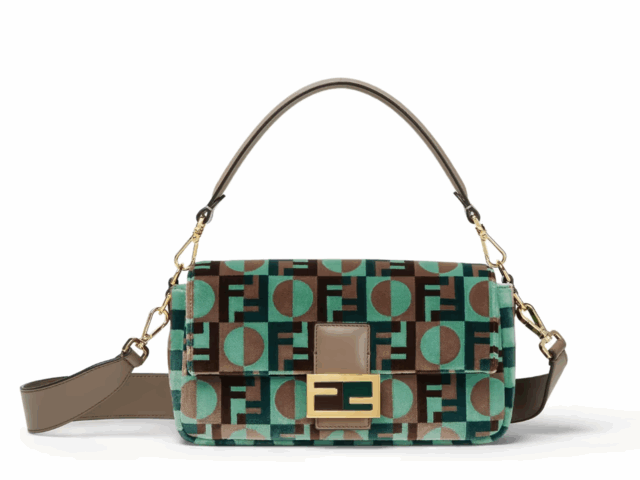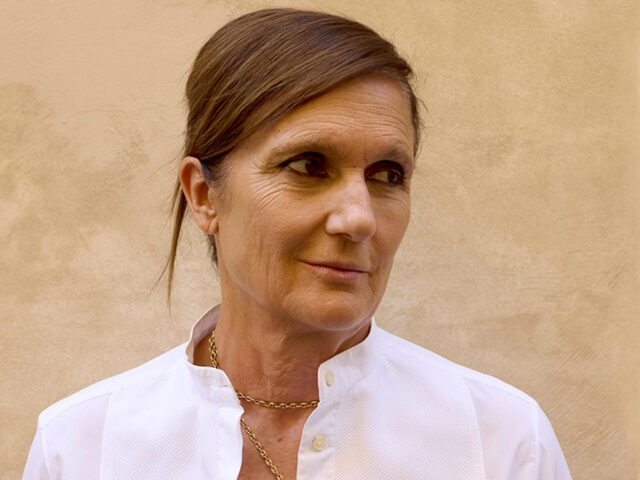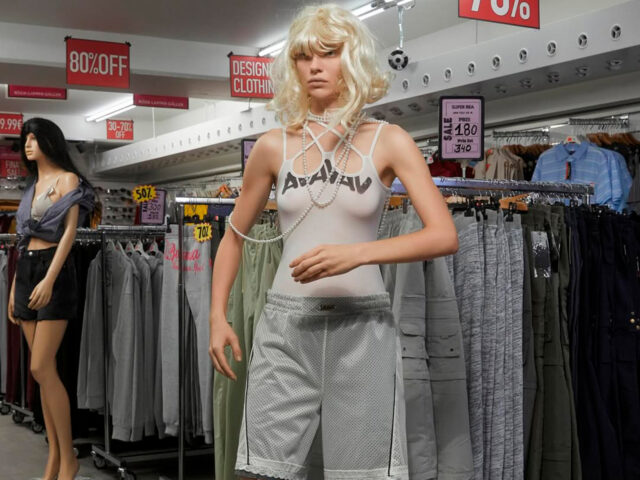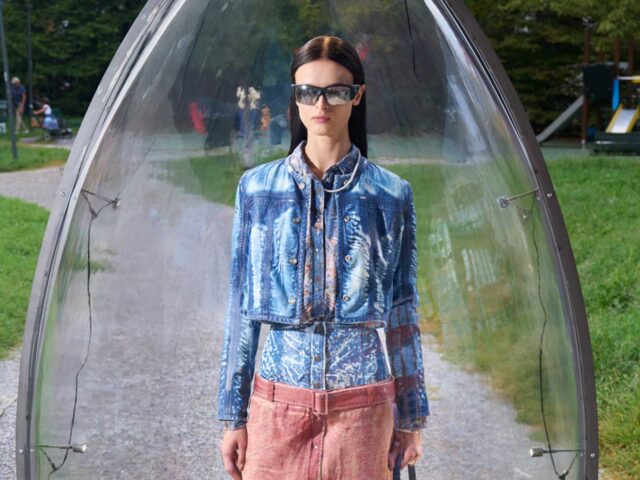Milan Fashion Week was illuminated by Fendi’s Spring-Summer 2025 runway show, a collection that pays homage to the house’s rich history while redefining the future of luxury. Inspired by the pillars of modern 1920s style, this collection not only celebrates the maison’s centenary, but also explores how the past continues to shape the present. ‘The foundations of how women dress today and, in many ways, how we think, can be found in the 1920s,’ says Fendi’s artistic director of haute couture and womenswear, Kim Jones.
The importance of 1925 cannot be overlooked in this collection. It was then that Fendi established itself as a house dedicated to excellence, under the visionary eye of Adele Fendi. It was also the year of the Exposition Internationale des Arts Décoratifs et Industriels Modernes in Paris, an event that laid the foundations for the Art Deco movement, a fusion of art and functionality. The influence of this pivotal moment is palpable in the SS25 collection, where traditional forms and techniques meet modern, timeless design.
The collection reflects this dialogue between past and present through references to key literary works from 1925 such as Virginia Woolf’s Mrs Dalloway and F. Scott Fitzgerald’s The Great Gatsby, which also influence the aesthetic narrative of the collection. Kim Jones captures this modernist energy in the garments, with a focus on lightness, movement and feminine freedom. The collection is a tribute to women who not only exist, but do; an ode to modernity from the perspective of a house deeply tied to matriarchy.
A MARRIAGE OF HAUTE COUTURE AND READY-TO-WEAR: THE ESSENCE OF FE
One of the keys to the collection is the seamless integration of artisanal and industrial, handmade and machine-made, daywear and eveningwear. Fendi, a house built on a legacy of matriarchal excellence, celebrates women who not only are, but who make. There is an elevation of the everyday, an exaltation of the practical without sacrificing luxury.
Noble fabrics and meticulous finishes are a hallmark of the collection. Embroidery, while extremely detailed, is light and subtle, adorning archetypal garments such as silk shirts and organza. The use of materials such as soft suede and crocodile reflects Fendi’s ability to take the traditional and reinvent it. Suede tunics, silk dresses and ballerina silhouettes are a perfect blend of the ordinary and the extraordinary, fusing comfort and couture.
A highlight of the show was the boots created in collaboration with Red Wing, an iconic men’s footwear brand since 1952. These boots fuse the suppleness of Cuoio Romano leather and the hand stitching of Fendi’s Selleria technique, taking tradition to new heights. Playing with masculine and feminine, this collaboration encapsulates the duality of the collection.
The bags, always an essential element of Fendi, reflect the spirit of the collection in terms of structure and materials. The Mamma Baguette, in particular, was reimagined in a larger, more structured version, in homage to Adele Fendi, the founder of the house and grandmother of Silvia Venturini Fendi. This version celebrates the legacy of leather goods that has defined the maison since its earliest days.
Delfina Delettrez Fendi, in charge of the creative direction of the house’s jewellery, presented her FENDI Filo collection, which reinterprets the art of Roman saddlery in jewellery that connects past, present and future. The thread, which metaphorically links the history of Fendi, becomes the symbol of the house’s unwavering legacy, reflected in elegant, understated pieces.
Silvia Venturini Fendi, artistic director of accessories and menswear, stressed the importance of quality as the hallmark of the house. ‘Quality is the number one point in addition to beauty in design. It is a testament to what we have achieved in our 100-year history,’ declared Silvia, reaffirming that the obsession for perfection, which began with her grandmother Adele, remains at the heart of Fendi.
Sigue toda la información de HIGHXTAR desde Facebook, Twitter o Instagram
You may also like...

